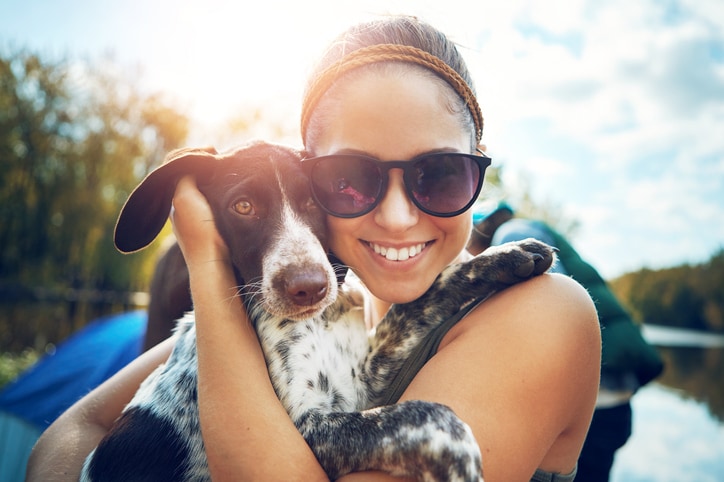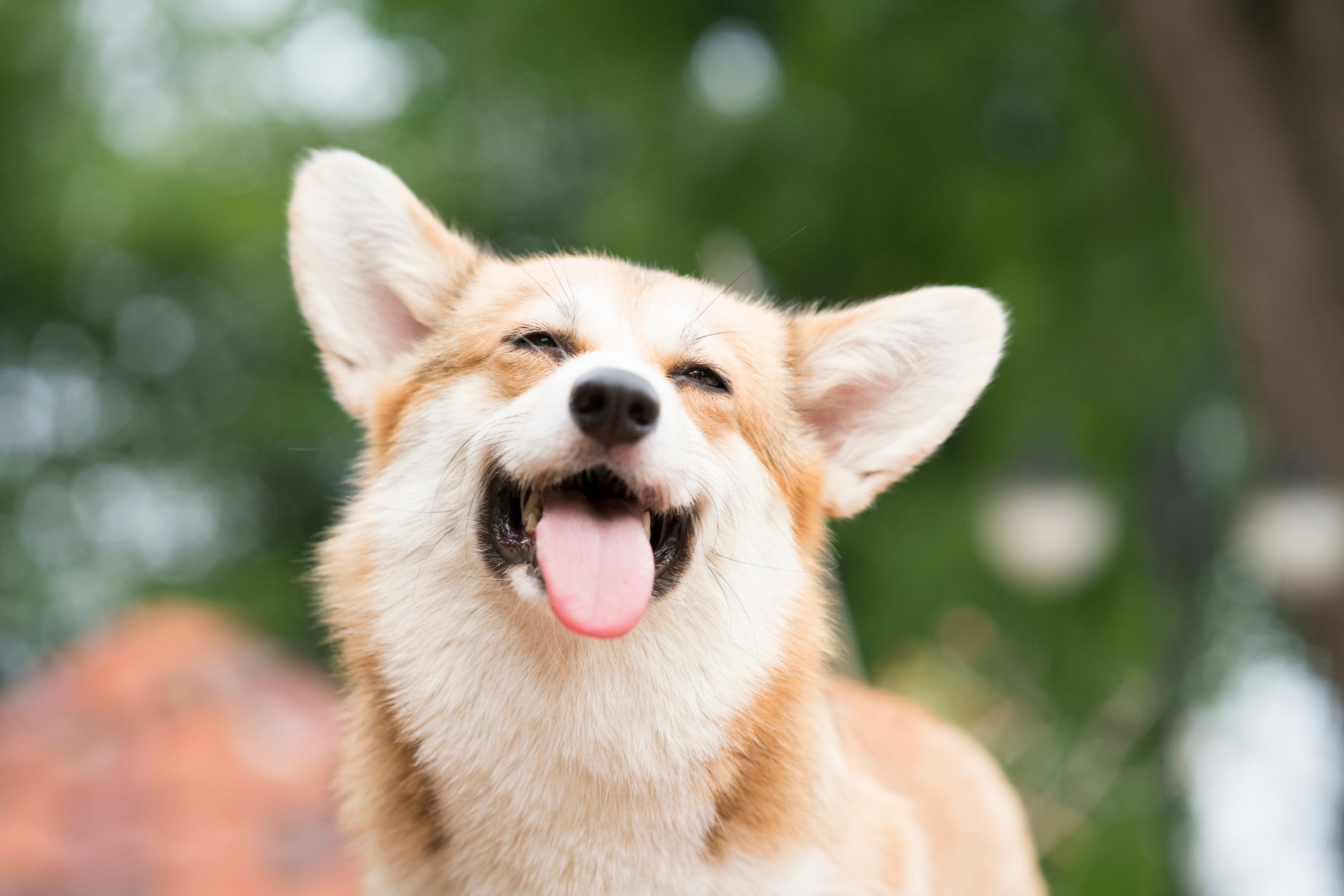Your living room is littered with pup-approved playthings, from rugged ropes to squeaky stuffies. Yet nothing makes your dog’s eyes light up like the forgotten yellow ball from the bottom of your gym bag. What is it about tennis balls that dogs find irresistible?
“Dogs love tennis balls because they are perfectly designed to appeal to their natural instincts and preferences,” says Dr. Sarah Cortright, veterinarian and animal welfare advocate. “The bounce and movement of a tennis ball mimic the behavior of prey, which makes the chase and retrieval incredibly exciting for most dogs.”
One thing’s for sure, that fluorescent ball of fuzz is guaranteed to get your dog off the couch, helping stave off boredom-related behaviors like digging and excessive barking. Keep in mind, though, that while they’re designed to stand up to rough play on the court, tennis balls might not withstand heavy chewers. We asked veterinarians for insights to help pet parents better understand their dog’s obsession and how to keep their pup safe during play time.
“A dog’s color vision is mostly restricted to blues and yellows, so the bright yellow of a tennis ball may be visually appealing to them.”
— Dr. Rhiannon Koehler, veterinarian expert, TeachMe.To.
Why do dogs love tennis balls?
Veterinarians agree that a tennis ball’s unpredictable movements activate your dog’s prey drive, making them a thrill to chase. But while other bouncy balls may have a similar appeal, the tennis ball’s bright exterior could make it even more enticing for our four-legged family members.
Like humans with red-green colorblindness, dogs have dichromatic vision that limits their perception of color, explains Dr. Rhiannon Koehler, veterinarian expert at TeachMe.To. “A dog’s color vision is mostly restricted to blues and yellows, so the bright yellow of a tennis ball may be visually appealing to them.”
While your dog might lose track of a red ball sitting in the green grass right under their nose, a yellow tennis ball is sure to catch their eye.
Do all dogs like tennis balls?
For many high-prey-drive dogs, tennis balls are a holy grail. Play style comes down to individual preference, though, so they might not be a match for your pup. Cortright recommends trying different products, DIY dog toys and games to see what wags their tail.
“While retrievers and herding breeds may naturally gravitate toward chasing and retrieving objects like tennis balls, some dogs simply aren’t interested. Others might prefer soft toys, chew toys or mentally stimulating activities like scent work or puzzle games,” she says. “If your dog doesn’t show interest in tennis balls, it’s worth trying out different types of toys or activities to find what truly engages them.”
Are tennis balls safe for dogs?
Tennis balls are covered in a scratchy material that serves three purposes on the court: increasing air resistance so they’re easier to hit, improving the player’s grip and standing up to wear and tear.
Koehler points out that the fuzzy, felt-covered exterior offers dogs an exciting mouthfeel, but can be detrimental to their dental health. With prolonged play, the material acts as sandpaper that wears away at the enamel, the hard, outermost layer of your dog’s teeth, leaving the sensitive, nerve-dense inner pulp exposed.
“Even appropriately sized balls can become lodged in a dog’s throat, which can be life-threatening.”
— Dr. Sarah Cortright, veterinarian and animal welfare advocate
“While it’s probably okay to let your dog occasionally play fetch with a tennis ball, you definitely don’t want to let them chew on the ball or carry tennis balls around in their mouth regularly.”
What’s more, tennis balls can pose choking and gastric obstruction risks. With their hollow rubber core, they’re easy for many dogs to break into small parts that they may accidentally swallow.
“Even appropriately sized balls can become lodged in a dog’s throat, which can be life-threatening,” warns Cortright. “For example, I once treated a one-year-old German shepherd who experienced a choking emergency after a ball became lodged in his throat, even though the ball was considered an appropriate size for him.”
Safe ways to play with dogs and tennis balls
Playing with your dog is essential to their physical and mental health. If your dog loves tennis balls, they can be used with supervision, like during a game of fetch. If your dog attempts to chew the ball, take it away and replace it with an appropriate chew toy. Store them out of your dog’s reach between supervised play sessions.
Koehler recommends another fun way to engage your dog with tennis balls. “You can hide food or treats in a muffin tin and cover the openings with tennis balls to create your own form of puzzle feeder. The dog has to move the tennis ball to get the reward.”
What are the best dog-friendly alternatives to tennis balls?
If you’d rather not take chances with human sports equipment, Cortright recommends looking to reputable dog toy brands for safer options.
“If your dog loves to chew or play intensely, consider safer alternatives to regular tennis balls. Rubber balls designed for dogs, such as those made by Kong or Playology, are excellent options,” she says. “These products are made with durable, non-abrasive materials that are less likely to cause dental damage or pose choking hazards. They’re also built to withstand heavy chewing, making them ideal for dogs with more aggressive play styles.”
Even specially designed dog toys have their limits, though, Koehler notes, and should be used under supervision and discarded when they show signs of breakage.
The bottom line
Fuzzy, bright yellow tennis balls can be used safely for occasional fetch and chase play sessions with your dog. Improper use can lead to worn down teeth, choking or gastric obstruction, though, so they should only be used under supervision.
Veterinarians recommend playing with your dog, enjoying dog-friendly activities together and getting to know their play style to promote physical wellness, mental stimulation and bonding.
“Rotate toys regularly to keep things interesting and incorporate a variety of games, training sessions and interactive play to keep your dog both mentally and physically engaged,” says Cortright. “Understanding your dog’s unique needs will help you create a safe and enriching environment that supports their happiness and well-being.”





